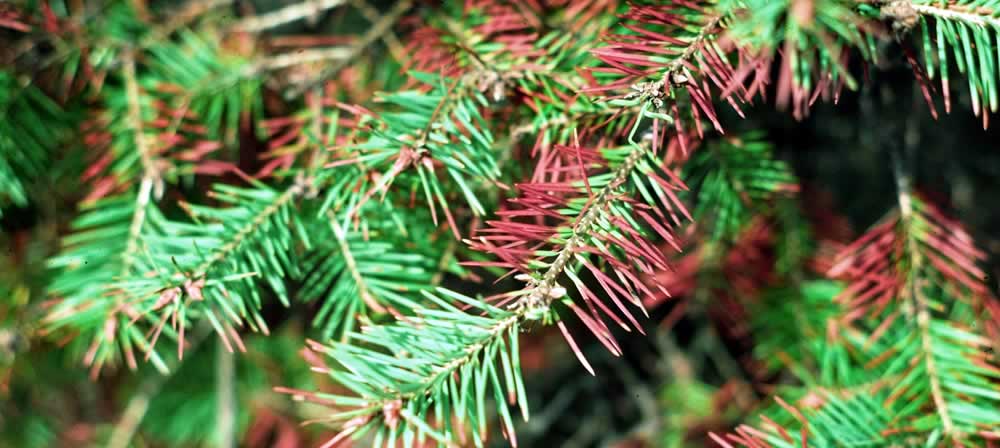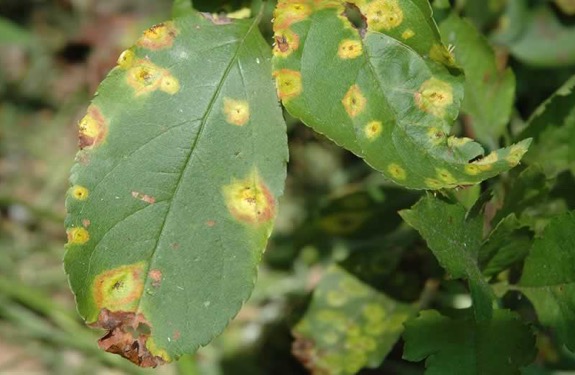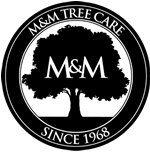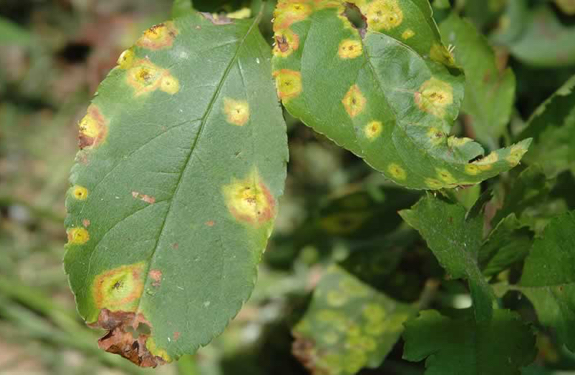Tree Fungus on your trees can come in many forms like the relatively harmless shelf mushrooms to something deadlier for your trees like the Rhizosphaera Needle Cast which will kill your Colorado Blue Spruce tree. You can never “cure” a tree of fungus, but you can get the fungus to go “into remission” where your tree returns to health and vigor.

What are Some Bad Types of Tree Funguses?
Funguses that can harm trees include oak wilt, root rot, butt rot, heart rot, canker tree disease, sooty mold, powdery mildew disease, rhizosphaera needle cast, cedar apple rust, apple scab disease, and more. Oh my! With so many bad funguses around, how do our trees survive? We will give you that answer below.
Fungal diseases can be dangerous to trees. The funguses can break down a tree’s structural integrity leading them to literally fall apart. A fungus may also attack the leaves hurting a tree’s ability to make food through photosynthesis. In the long run, any sick tree can become dangerous when its strength is broken down by a fungus.
The good news is tree fungi do NOT generally transmit to humans. And no, the fungus anthracnose has nothing to do with anthrax (yes, I had to correct my neighbor on that one). You really just need to make sure tree parts don’t start falling on people.
How do Trees Get a Fungus?
The bad news is, fungal spores are ALWAYS around your tree. There is absolutely nothing you can do to prevent your tree from getting in contact with spores. The spores are carried to your tree by:
• Winds transporting spores
• Hard rains splashing spores up onto a tree
• Contaminated gardening tools
• Human and animal movement like when you walk through an infected area and unknowingly take on hitchhiking spores with you to later deposit those spores in a new area.
The good news is, trees are born with a resistance to most funguses. Trees are kind of like you and me. When we are healthy, our immune system can fight off just about anything that invades our system. But if we have a weakened immune system, we may need help fighting off a disease.
Trees are exactly the same. That means keeping your trees healthy to prevent a fungal infection is the best medicine. Ensuring your tree has the right amount of moisture at its roots, it has the nourishment it needs to be healthy, and that it gets the right amount of sunlight are big components of keeping your tree healthy. Since healthy trees rarely get a fungal infection, it is perfectly fine that the spores continually float around them.

What are Signs Of A Tree Fungal Disease?
Fungus, like most tree diseases, will show itself in one of just a few ways. You may see abnormal growth, discoloration, or wilting in the leaves or needles. You may see discoloration or growth (scabs) in the bark. You may see fungus growing on your tree. You may see a dusting or a coating on parts of your tree. If you feel unusual sogginess near the trunk of your tree, that could be the sign of root rot. Finally, you may see “die off” where leaves or needles fall off and branches go dry during the growing season.
Basically, just follow the rule you would follow when you decide if you should take your kid to the doctor. If the tree looks and acts normal for that tree, it is likely fine. If the tree looks or acts differently than what you expect and it appears to be a health issue, call your local arborist to inspect your trees (shameless plug – our arborists complete FREE tree inspections in the Greater Milwaukee area for you)

What can I do if My Tree has a Harmful Fungus?
If a fungal infection is suspected, we start with a free tree inspection. Sometimes a fungal infection is so advanced in a tree that you are better off to replace it with a new tree.
If an inspection shows your tree still has ample opportunity to thrive in the years to come, we will attack the problem from two angles. First, we will work at removing or containing the infection through pruning and tree antifungal treatments. Second, we build up the health of the tree so its own immune system can also fight the fungal tree infection.
On Ounce of Prevention is Worth a Pound of Cure.
It is much better to prevent fungal infection in a tree than to try to fix a problem in your tree that already exists. To prevent infection, ensure:
• the tree is healthy and that it receives the proper amount of water and nourishment, providing extra water or fertilizer as necessary.
• Make sure your soil drains properly for your tree species and avoid overwatering the tree.
• Remove fallen leaves from your yard
• Clean and sanitize garden tools between use on different plants, especially if the tools have come in contact with an infected plant
• Use fungicides when necessary.
Are you wondering if your trees have a fungal infection? Or maybe you just want to learn more about keeping your trees healthy. Feel free to give us a call today to schedule that free tree inspection appointment.

